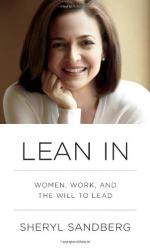
|
| Name: _________________________ | Period: ___________________ |
This quiz consists of 5 multiple choice and 5 short answer questions through Chapter 1.
Multiple Choice Questions
1. According to the author in Chapter 1: “The Leadership Ambition Gap,” what percentage of mothers are primary breadwinners and earn the majority of their family’s earnings?
(a) 56%.
(b) 16%.
(c) 41%.
(d) 33%.
2. According to the author in the Introduction: “Internalizing the Revolution,” “A 2011 McKinsey report noted that men are promoted based on potential, while women are promoted based on” what?
(a) “Academic credentials.”
(b) “Personality.”
(c) “Physical attractiveness.”
(d) “Past accomplishments.”
3. What social-psychological phenomenon is described with the observation that when members of a group are made aware of a negative stereotype, they are more likely to perform according to that stereotype?
(a) “Tokenism.”
(b) “Abject racism.”
(c) “Stereotype threat.”
(d) “Fear of the Other.”
4. According to the author in the Introduction: “Internalizing the Revolution,” women of color hold what percentage top corporate jobs today?
(a) 8%.
(b) 4%.
(c) 10%.
(d) 12%.
5. Who is described as “president of the Rockefeller Foundation and the first woman to serve as president of an Ivy League university” in Chapter 1: “The Leadership Ambition Gap”?
(a) Jocelyn Goldfein.
(b) Kash Rangan.
(c) Judith Rodin.
(d) Meg Whitman.
Short Answer Questions
1. When does Sheryl Sandberg say she graduated college in the Introduction: “Internalizing the Revolution”?
2. Who is described as the “deputy director of the Council on Foreign Relations’ Women and Foreign Policy Program” in Chapter 1: “The Leadership Ambition Gap”?
3. When the author became pregnant with her first child, she was running the online sales and operations groups for what corporation, as noted in the Introduction: “Internalizing the Revolution”?
4. What coed college does the author say her mother attended in Chapter 1: “The Leadership Ambition Gap”?
5. The author says in the Introduction: “Internalizing the Revolution” that she became pregnant with her first child in the summer of what year?
|
This section contains 288 words (approx. 1 page at 300 words per page) |

|




